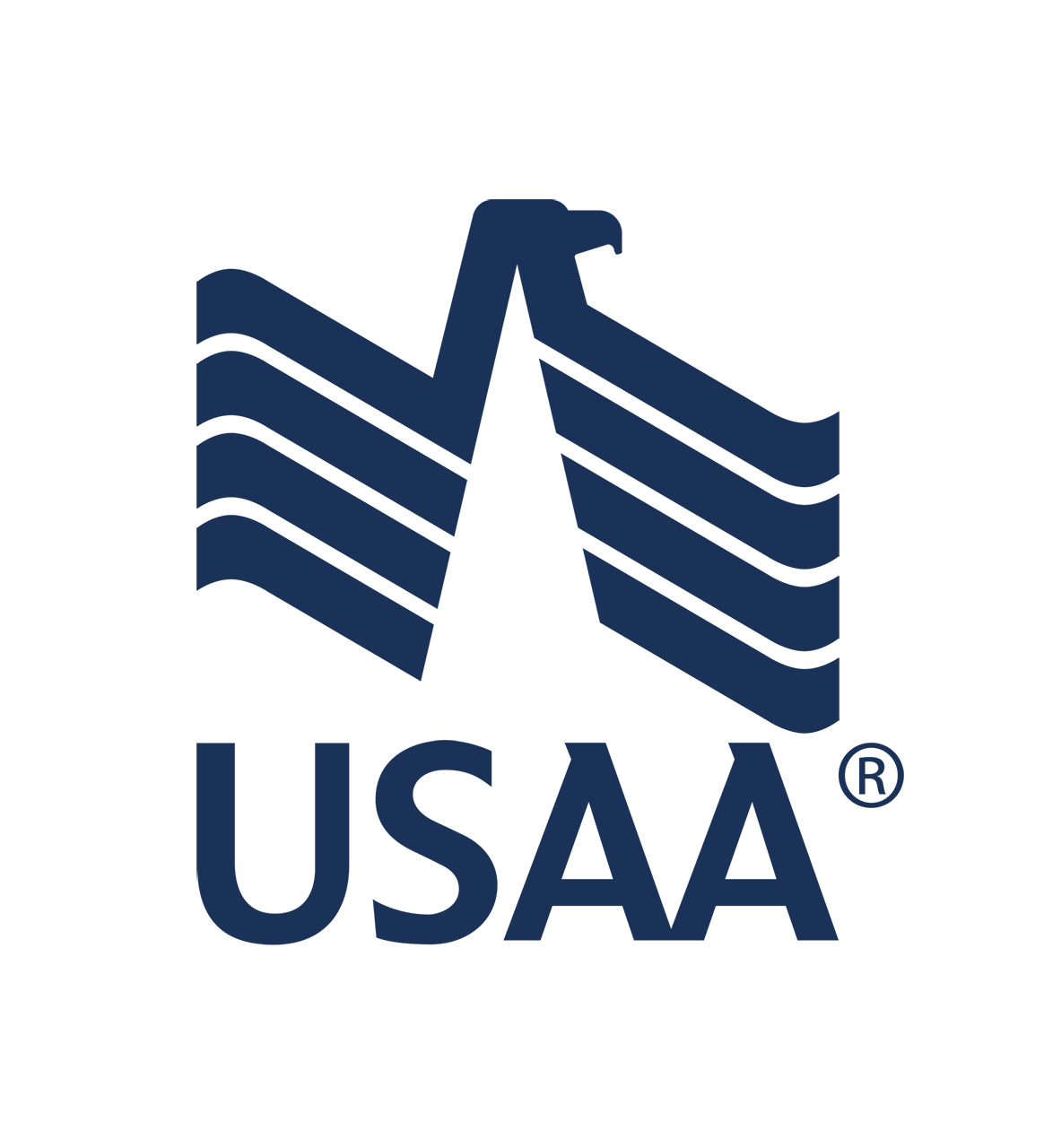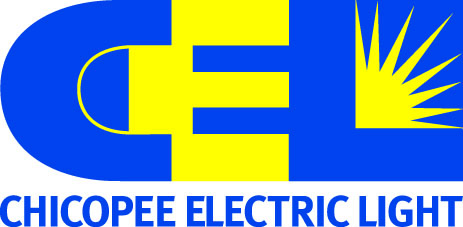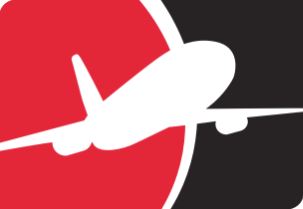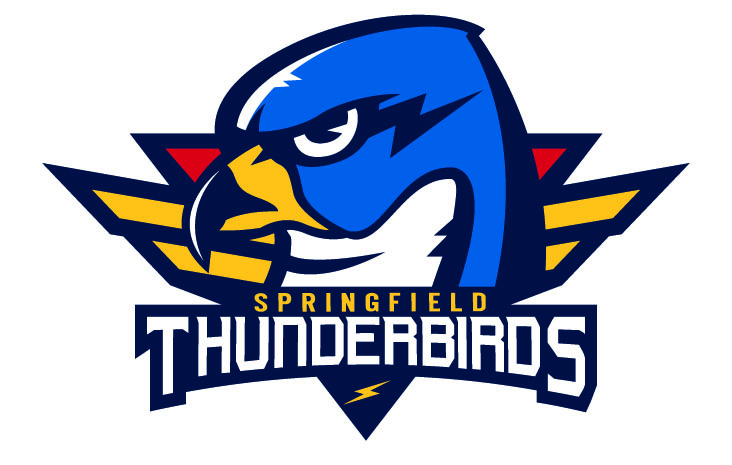Performers
United States Airforce Thunderbirds

The Thunderbirds have the privilege and responsibility to perform for people all around the world, displaying the pride, precision and professionalism of American Airmen. In every hour-long demonstration, the team combines years of training and experience with an attitude of excellence to showcase what the Air Force is all about.
The sharply choreographed, drill-style ground ceremony kicks off the demonstration by showcasing the attention to detail and esprit de corps that defines our enlisted members. As the jets take to the skies and fly only a few feet from wingtip to wingtip, the crowd gets a glimpse of the awesome skills and capabilities that all fighter pilots must possess. The solo pilots integrate their own loud and proud routine, exhibiting some of the maximum capabilities of the F-16 Fighting Falcon – the Air Force’s premier multi-role fighter jet.
C-5 Galaxy
 The C-5 Galaxy is one of the largest aircraft in the world and the largest airlifter in the Air Force inventory. The aircraft can carry a fully equipped combat-ready military unit to any point in the world on short notice and then provide the supplies required to help sustain the fighting force.
The C-5 Galaxy is one of the largest aircraft in the world and the largest airlifter in the Air Force inventory. The aircraft can carry a fully equipped combat-ready military unit to any point in the world on short notice and then provide the supplies required to help sustain the fighting force.
The C-5 has a greater capacity than any other airlifter. It has the ability to carry 36 standard pallets and 81 troops simultaneously. The Galaxy is also capable of carrying any of the Army’s air-transportable combat equipment, including such bulky items as the 74-ton mobile scissors bridge. It can also carry outsize and oversize cargo over intercontinental ranges and can take off or land in relatively short distances. Ground crews are able to load and off-load the C-5 simultaneously at the front and rear cargo openings, reducing cargo transfer times.
The C-5 has the distinctive high T-tail, 25-degree wing sweep, and four turbofan engines mounted on pylons beneath the wings.
C-17 Globemaster III
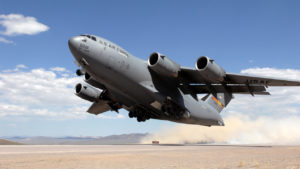 The C-17 Globemaster III is the newest, most flexible cargo aircraft to enter the airlift force. The C-17 is capable of rapid strategic delivery of troops and all types of cargo to main operating bases or directly to forward bases in the deployment area. The aircraft can perform tactical airlift and airdrop missions and can transport litters and ambulatory patients during aeromedical evacuations when required. The inherent flexibility and performance of the C-17 force improve the ability of the total airlift system to fulfill the worldwide air mobility requirements of the United States.
The C-17 Globemaster III is the newest, most flexible cargo aircraft to enter the airlift force. The C-17 is capable of rapid strategic delivery of troops and all types of cargo to main operating bases or directly to forward bases in the deployment area. The aircraft can perform tactical airlift and airdrop missions and can transport litters and ambulatory patients during aeromedical evacuations when required. The inherent flexibility and performance of the C-17 force improve the ability of the total airlift system to fulfill the worldwide air mobility requirements of the United States.
KC-135 Stratotanker
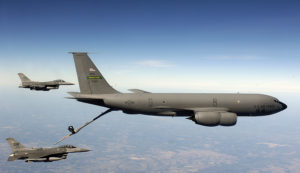
F-16 Fighting Falcons receive fuel from a KC-135 Stratotanker. (U.S. Air Force photo/Staff Sgt Suzanne Day)
Introduced in 1957, The KC-135 Stratotanker provides the core aerial refueling capability for the United States Air Force and has excelled in this role for more than 50 years. This unique asset enhances the Air Force’s capability to accomplish its primary mission of global reach. It also provides aerial refueling support to Air Force, Navy, Marine Corps and allied nation aircraft. The KC-135 is also capable of transporting litter and ambulatory patients using patient support pallets during aeromedical evacuations. Four turbofans, mounted under 35-degree swept wings, power the KC-135 to takeoffs at gross weights of up to 322,500 pounds. A cargo deck above the refueling system can hold a mixed load of passengers nd cargo. Depending on fuel storage configuration, the KC-135 can carry up to 83,000 pounds of cargo.
Nearly all internal fuel can be pumped through the flying boom, the KC-135’s primary fuel transfer method. One crewmember, known as the boom operator, is stationed in the rear of the plane and controls the boom during in-flight air refueling.
A special shuttlecock-shaped drogue attached to and trailing behind the flying boom may be used to refuel aircraft fitted with probes. Some aircraft have been configured with the multipoint refueling system, which consists of special pods mounted on the wingtips. These KC-135s are capable of refueling two receiver aircraft at the same time.
Golden Knights
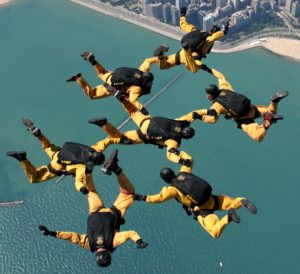 In 1959, nineteen Airborne Soldiers from various military units formed the Strategic Army Command Parachute Team (STRAC). Brigadier General Joseph Stilwell Jr. gathered the Soldiers with the intent of competing in the relatively new sport of skydiving, which at that time was dominated by the Soviet Union. That year, the U.S. Army team began representing the United States on the international competition circuit, and performed their first demonstration in Danville, Virginia. Two years later, the Department of Defense announced that the STRAC team would become the United States Army Parachute Team.
In 1959, nineteen Airborne Soldiers from various military units formed the Strategic Army Command Parachute Team (STRAC). Brigadier General Joseph Stilwell Jr. gathered the Soldiers with the intent of competing in the relatively new sport of skydiving, which at that time was dominated by the Soviet Union. That year, the U.S. Army team began representing the United States on the international competition circuit, and performed their first demonstration in Danville, Virginia. Two years later, the Department of Defense announced that the STRAC team would become the United States Army Parachute Team.
By 1962, the team earned the nickname the “Golden Knights”. “Golden” signified the gold medals the team had won while “Knights” alluded to the team’s ambition to conquer the skies.
Since then, the Golden Knights have conducted more than 16,000 shows in 50 states and 48 countries, reaching an average of 60,000 people per show. The team has earned the U.S. Army 2,148 gold, 1,117 silver, and 693 bronze medals in national and international competition. Team members have also broken 348 world records.
Team FastTrax
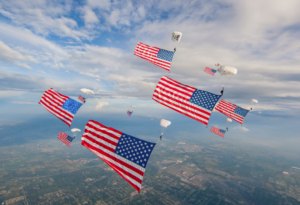 Team Fastrax™ is the most ambitious professional parachute demonstration team in the world. The team roster has more than forty active members, with a culmination of more than 175,000 skydives. A Team Fastrax™ demonstration skydive typically consists of a member exiting an aircraft over a large crowd such as an airshow or major sports event. The member then descends to a precise landing, thrilling the spectators.
Team Fastrax™ is the most ambitious professional parachute demonstration team in the world. The team roster has more than forty active members, with a culmination of more than 175,000 skydives. A Team Fastrax™ demonstration skydive typically consists of a member exiting an aircraft over a large crowd such as an airshow or major sports event. The member then descends to a precise landing, thrilling the spectators.
Since the inception of the Team Fastrax™ Professional Skydiving Parachute Demonstration Team in 2002, we have performed thousands of exhibition skydives. Team Fastrax™ has performed at every entertainment venue imaginable, as far away as Moscow, Russia and Normandy, France. We perform veteran skydives and are approved to jump in highly-restricted airspace. We’re also the only parachute demo team to have performed over Ground Zero on 9/11, the Pentagon, Independence Hall, and over the Arizona Memorial in Pearl Harbor, Hawaii.
Our parachute team jumps at balloon festivals, air shows, NASCAR, Indy Race League, and Formula One. We have even performed at symphony performances, golf courses, amusement parks, tennis courts and veteran support events. The team has also performed at various sports venues such as Major League Baseball, the National Football League, and Major League Soccer. We’ve also performed at NCAA baseball, football and lacrosse, high school sporting events and others. We sometimes dress in mascot costumes and franchise uniforms when needed.
Our skydive demonstration performances can be seen in movies and commercials. Our stunt team has even performed stunts for television shows. We know that the breadth and depth of exhibition skydiving venues is deep and wide and we have not seen it all. Sometimes people surprise us with new and unusual venues, so surprise us. Reach out to Team Fastrax™ today to learn more about America’s Skydiving Team performing a skydiving demo for you.
GEICO Skytypers
 The World Famous GEICO Skytypers airshow team is a flight squadron of six WWII-vintage U.S. Navy SNJ trainers . The team performs a thrilling, low-altitude, precision-formation flying demonstration filling the sky and coming from all directions to provide spectators a unique viewing experience while showcasing the tactics and maneuvers utilized in the Second World War.
The World Famous GEICO Skytypers airshow team is a flight squadron of six WWII-vintage U.S. Navy SNJ trainers . The team performs a thrilling, low-altitude, precision-formation flying demonstration filling the sky and coming from all directions to provide spectators a unique viewing experience while showcasing the tactics and maneuvers utilized in the Second World War.
In addition to their air show performances, the GEICO Skytypers also type giant messages in the sky. Known as the world’s largest text messages, skytyping is 17 times faster than skywriting and produces a letter every four seconds in a dot-matrix pattern. The messages are as tall as the Empire State Building, can extend up to 8 miles in length, and are visible up to 15 miles in any direction — or for nearly 400 square miles. In between air shows, these messages can often be seen at major events and venues in the Northeast near the team¹s home base at Republic Airport in Farmingdale, NY.
P-51 Mustang
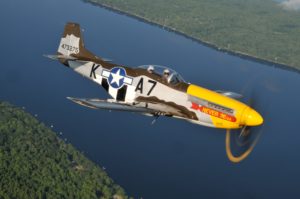 The North American Aviation P-51 Mustang is an American long-range, single-seat fighter and fighter-bomber used during World War II and the Korean War, among other conflicts. The Mustang was designed in 1940 by North American Aviation (NAA) in response to a requirement of the British Purchasing Commission. The Purchasing Commission approached North American Aviation to build Curtiss P-40 fighters under license for the Royal Air Force (RAF). Rather than build an old design from another company, North American Aviation proposed the design and production of a more modern fighter. The prototype NA-73X airframe was rolled out on 9 September 1940, 102 days after the contract was signed, and first flew on 26 October.
The North American Aviation P-51 Mustang is an American long-range, single-seat fighter and fighter-bomber used during World War II and the Korean War, among other conflicts. The Mustang was designed in 1940 by North American Aviation (NAA) in response to a requirement of the British Purchasing Commission. The Purchasing Commission approached North American Aviation to build Curtiss P-40 fighters under license for the Royal Air Force (RAF). Rather than build an old design from another company, North American Aviation proposed the design and production of a more modern fighter. The prototype NA-73X airframe was rolled out on 9 September 1940, 102 days after the contract was signed, and first flew on 26 October.
The Mustang was originally designed to use the Allison V-1710 engine, which, in its earlier variants, had limited high-altitude performance. It was first flown operationally by the RAF as a tactical-reconnaissance aircraft and fighter-bomber (Mustang Mk I). The replacement of the Allison with a Rolls-Royce Merlin resulted in the P-51B/C (Mustang Mk III) model and transformed the Mustang’s performance at altitudes above 15,000 ft, allowing the aircraft to compete with the Luftwaffe’s fighters.The definitive version, the P-51D, was powered by the Packard V-1650-7, a license-built version of the Rolls-Royce Merlin 66 two-stage two-speed supercharged engine and was armed with six .50 caliberBrowning machine guns.
From late 1943, P-51Bs and Cs (supplemented by P-51Ds from mid-1944) were used by the USAAF’s Eighth Air Force to escort bombers in raids over Germany, while the RAF’s Second Tactical Air Force and the USAAF’s Ninth Air Force used the Merlin-powered Mustangs as fighter-bombers, roles in which the Mustang helped ensure Allied air superiority in 1944.The P-51 was also used by Allied air forces in the North African, Mediterranean, Italian and Pacific theaters. During World War II, Mustang pilots claimed to have destroyed 4,950 enemy aircraft.
SHOCKWAVE Jet Truck
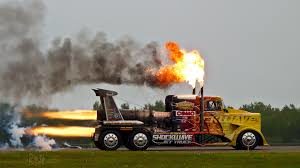 Shockwave is a custom built race truck equipped with 3 huge J34-48 Pratt & Whitney Jet Engines originally out of the USA Navy T2 Buckeye. The combined horsepower is 36,000! These 3 Jet Engines make a total of 21,000 lbs of thrust which easily propels this truck to speeds over 350 mph while racing planes at air shows all over North America! Shockwave is not only the most powerful truck in the world, it also hold the record speed for Semi Trucks at 376 mph! As one of the most popular air show and drag racing exhibition vehicles in the world, the Shockwave performance is not something you will soon forget! This is truly an assault of all of your senses with huge flames coming out of the 3 after burning jet engines, fire shooting out of the smoke stacks, intense heat, deafening noise, and SPEED! Shockwave is owned by Darnell Racing Enterprises, Inc based in Springfield, MO and driven by Chris Darnell.
Shockwave is a custom built race truck equipped with 3 huge J34-48 Pratt & Whitney Jet Engines originally out of the USA Navy T2 Buckeye. The combined horsepower is 36,000! These 3 Jet Engines make a total of 21,000 lbs of thrust which easily propels this truck to speeds over 350 mph while racing planes at air shows all over North America! Shockwave is not only the most powerful truck in the world, it also hold the record speed for Semi Trucks at 376 mph! As one of the most popular air show and drag racing exhibition vehicles in the world, the Shockwave performance is not something you will soon forget! This is truly an assault of all of your senses with huge flames coming out of the 3 after burning jet engines, fire shooting out of the smoke stacks, intense heat, deafening noise, and SPEED! Shockwave is owned by Darnell Racing Enterprises, Inc based in Springfield, MO and driven by Chris Darnell.
Prowlers of the Pacific
Dauntless
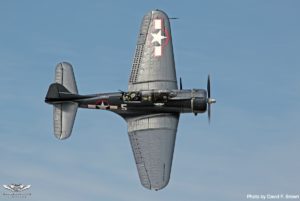 The Northrop Corporation first developed the SBD before World War II. It was first flown in July 1935, but considered obsolete by December 1941 when the Japanese attacked Pearl Harbor. Douglas Aircraft purchased the SBD contract and the SBD-1 was first delivered in late 1940. Over 5,000 aircraft were built and production of the carrier-based scout, dive and torpedo bomber ceased in July 1944.
The Northrop Corporation first developed the SBD before World War II. It was first flown in July 1935, but considered obsolete by December 1941 when the Japanese attacked Pearl Harbor. Douglas Aircraft purchased the SBD contract and the SBD-1 was first delivered in late 1940. Over 5,000 aircraft were built and production of the carrier-based scout, dive and torpedo bomber ceased in July 1944.
Despite accusations that the aircraft was under-powered, vulnerable, lacking in range and exhausting to fly for any length of time, the “Dauntless” helped turn the tide of World War II at the Battle of Midway on June 4, 1942. The “Dauntless” sunk four major aircraft carriers of the Japanese Navy, ceasing Japanese expansion in the Pacific. The SBD also served with 20 U.S. Marine Corps Squadrons and many SBDs were retrofitted with Westinghouse ASB radar, the first to be used by the U.S. Navy. Though considered obsolete on that “Day of Infamy” in the skies over Pearl Harbor, December 7, 1941, the SBD was the first American combat aircraft to shoot down a Japanese Zero fighter. It may have been slow, but it was deadly, as that Japanese pilot found out that day. The SBD was the only U.S. combat aircraft to fight from the beginning of the World War II until the end. Considered the most destructive air weapon of the U.S. Navy, the SBD sank over 300,000 tons of enemy ships, a greater tonnage of Japanese shipping than any other Allied aircraft during the war! Eighteen were warships, including five aircraft carriers sunk in the battle of the Coral Sea and Midway. It earned the nickname “Slow, But Deadly!” After the war, the U.S. Marine Corps continued to use the SBD, and in the 1950s, the French Air Force used SBDs in its war in Indo-China.
B5N
 The Nakajima B5N (Japanese: B5N, Allied reporting name “Kate”) was the standard carrier torpedo bomber of the Imperial Japanese Navy (IJN) for much of World War II. Although the B5N was substantially faster and more capable than its Allied counterparts, the TBD Devastator, Fairey Swordfish and Fairey Albacore, it was nearing obsolescence by 1941. Nevertheless, the B5N operated throughout the whole war, due to the delayed development of its successor, the B6N. In the early part of the Pacific War, flown by well-trained IJN aircrews and as part of well-coordinated attacks, the B5N achieved particular successes at the battles of Pearl Harbor, Coral Sea, Midway, and Santa Cruz Islands. The aircraft flying in the airshow is actually a replica, built in 1969 for the Movie Tora! Tora! Tora! by combining the airframe of a North American SNJ-4 with the tail section of a Vultee BT-13. With its 600 hp Pratt and Whitney R1340-AN engine, its performance is actually equivalent to that of an original Kate. In addition to its role in Tora! Tora! Tora!, this Kate has appeared in the movies The Battle of Midway, The Flying Misfits, War and Remembrance, and the TV Series, Black Sheep Squadron.
The Nakajima B5N (Japanese: B5N, Allied reporting name “Kate”) was the standard carrier torpedo bomber of the Imperial Japanese Navy (IJN) for much of World War II. Although the B5N was substantially faster and more capable than its Allied counterparts, the TBD Devastator, Fairey Swordfish and Fairey Albacore, it was nearing obsolescence by 1941. Nevertheless, the B5N operated throughout the whole war, due to the delayed development of its successor, the B6N. In the early part of the Pacific War, flown by well-trained IJN aircrews and as part of well-coordinated attacks, the B5N achieved particular successes at the battles of Pearl Harbor, Coral Sea, Midway, and Santa Cruz Islands. The aircraft flying in the airshow is actually a replica, built in 1969 for the Movie Tora! Tora! Tora! by combining the airframe of a North American SNJ-4 with the tail section of a Vultee BT-13. With its 600 hp Pratt and Whitney R1340-AN engine, its performance is actually equivalent to that of an original Kate. In addition to its role in Tora! Tora! Tora!, this Kate has appeared in the movies The Battle of Midway, The Flying Misfits, War and Remembrance, and the TV Series, Black Sheep Squadron.
Corsair
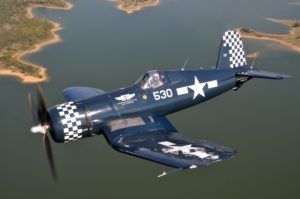 The Corsair, originally developed by Chance-Vought, and produced by Goodyear and Brewster under license, has become one of the most popular Fighter aircraft of the Second World War, however, its original debut as a Carrier-borne fighter was less than spectacular. The airplane had been intended to replace older naval fighter variants, but its difficult carrier landing characteristics caused the navy to pass many of the airplanes off to the Marine Corps’ land based air support units. The Marines gladly accepted the Corsair and groups like the “Black Sheep” squadron and the “Jolly Rodgers” tore up the skies. The carrier landing quirks were eventually worked out, allowing the Corsairs to return to the Fleet’s aircraft carriers – just in time to participate in some of the most grueling engagements in the war. The Palaus, Iwo Jima and Okinawa. It was here that the airplane earned a reputation as a “Mudfighter.” Getting down and dirty to support troops on the ground. Its impressive performance characteristics also earned it a reputation as a Kamikaze hunter in those dark days.
The Corsair, originally developed by Chance-Vought, and produced by Goodyear and Brewster under license, has become one of the most popular Fighter aircraft of the Second World War, however, its original debut as a Carrier-borne fighter was less than spectacular. The airplane had been intended to replace older naval fighter variants, but its difficult carrier landing characteristics caused the navy to pass many of the airplanes off to the Marine Corps’ land based air support units. The Marines gladly accepted the Corsair and groups like the “Black Sheep” squadron and the “Jolly Rodgers” tore up the skies. The carrier landing quirks were eventually worked out, allowing the Corsairs to return to the Fleet’s aircraft carriers – just in time to participate in some of the most grueling engagements in the war. The Palaus, Iwo Jima and Okinawa. It was here that the airplane earned a reputation as a “Mudfighter.” Getting down and dirty to support troops on the ground. Its impressive performance characteristics also earned it a reputation as a Kamikaze hunter in those dark days.
Spitfire
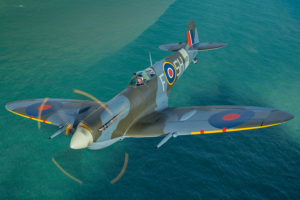 116 combat missions and flown by two Aces, BR601 is arguably one of the most significant surviving Allied fighters in the world.
116 combat missions and flown by two Aces, BR601 is arguably one of the most significant surviving Allied fighters in the world.
Surviving World War II aircraft are unique artifacts from a conflict that truly changed the world. How many are left? There are perhaps one hundred bombers remaining of the over one hundred thousand made by all nations. Approximately five hundred single engine fighters of the quarter million fighter and attack aircraft produced by all sides survive. Of these fighters, fewer than 10% are actual combat veterans. Most planes that remain are either training aircraft or had seen no use at all. Many brand new airplanes were cut up months after construction. A true Allied combat veteran aircraft is very rare, and Spitfire Mk. IX BR601, with its history of 116 combat missions, flown by two Aces, is arguably the most significant surviving Allied fighter aircraft in the world.
The early days of 1942 are hard to imagine. Japan was running unchecked through the Pacific in a new war against the United States. Great Britain was fighting for its very survival against Germany. The new Spitfire Mk. V (“Mark five”) had her late 1941 combat debut on the same day the Luftwaffe introduced the Fw 190. The superiority of the Fw 190 shook the RAF to its core as their “new” fighter was second best the day she was introduced. The Air Ministry took immediate steps to remedy the situation, introducing an experimental engine, the Rolls Royce Merlin Mk. 61. The two-stage supercharged engine had to be in front-line fighters as soon as possible. This program was so important that both Supermarine (the aircraft builder), and Rolls Royce were tasked to convert 50 of the new air-frames (Mk. Vb and Vc) to the interim Mk. IX standard. The immediate need for one hundred Mk. IX Spitfires was of the greatest importance. Painstakingly the larger, wider and different back end of the Merlin 61 engine was shoehorned into a new mount that would hold the fury of almost 1,600 horsepower. Ancillary systems were removed, modified or replaced and then refitted by hand. Radiators, coolers, lines and fittings all had to be replaced with larger parts to allow the full measure of the Merlin 61 to be unleashed. It must have been a thrilling time for those aircraftsmen working in secret on this new and improved Spitfire.
Ace Maker T-33
 Lockheed pushed the Army Air Corps for a jet trainer version but the Air Corps saw no need for such an aircraft and they didn’t want to “waste” any fighter airframes. The methods for training jet pilots in 1947 was 180 hours in the T-6, 50 hours in P-51 Mustangs, and about 25 hours in a “captive” P-80.
Lockheed pushed the Army Air Corps for a jet trainer version but the Air Corps saw no need for such an aircraft and they didn’t want to “waste” any fighter airframes. The methods for training jet pilots in 1947 was 180 hours in the T-6, 50 hours in P-51 Mustangs, and about 25 hours in a “captive” P-80.
Finally in January 1948 a cost-conscious Air Force awarded a contract for 20 TF-80C jet trainers and the designation was later changed to T-33A. The original trainer version was an F-80B fuselage with a 26 inch section added forward of the wingroot. Another 12 inch section was added forward of the rear fuselage for balance and stability. Additional differences between the P-80B and the TF-80C were: smaller 85 gallon fuselage fuel tank, nylon fuel cells, two .50 caliber guns instead of six, improved air conditioning, and of course dual fight controls. Also a six gun nose could be fitted to the T-33. Early models even had 1000 lb. bomb shackles on the wings. The only major change to the T-33 was the addition of Fletcher-type wingtip tanks. Almost 6000 T-33s were built, including 649 for the Navy and 1058 for foreign air forces. Canadair built 656 MKIIIs under license and Kawasaki built 210
Bill Stein Airshows
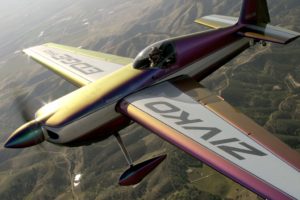 Bill Stein has logged over 5,000 hours of aerobatic and formation flight. Bill began flying aerobatics when he was still a student pilot and has been dedicated to perfecting his skills ever since. Since 1995 Bill has performed at air shows all across the United States and has entertained millions air show fans.
Bill Stein has logged over 5,000 hours of aerobatic and formation flight. Bill began flying aerobatics when he was still a student pilot and has been dedicated to perfecting his skills ever since. Since 1995 Bill has performed at air shows all across the United States and has entertained millions air show fans.
Bill’s passion for precision flying is evident in his dazzling air show routine. He trains every day so that his skills stay razor sharp, and to maintain the all-out energy and excitement he puts into his air show sequence. Bill’s experience includes competitive aerobatics and years of flying on the world famous Red Baron Stearman Squadron. Bill also gives back to the air show community by mentoring new air show pilots including coaching the “Stars of Tomorrow” team which have performed at many prestigious air shows including the EAA AirVenture Air Show.
Bill carries a Commercial Pilot Certificate with airplane multi-engine and single-engine instrument ratings. He has flown air shows in the Pitts Special, Globe Swift, Boeing Stearman, and in his current airplane: The state-of-the-art Zivko Edge 540.
101st Field Artillery Regiment, Massachusetts Army National Guard
 The 101st Field Artillery Regiment of the Massachusetts Army National Guard will perform an 11 gun salute to Brigadier General Stephen Parker, the Air show General Officer.
The 101st Field Artillery Regiment of the Massachusetts Army National Guard will perform an 11 gun salute to Brigadier General Stephen Parker, the Air show General Officer.







